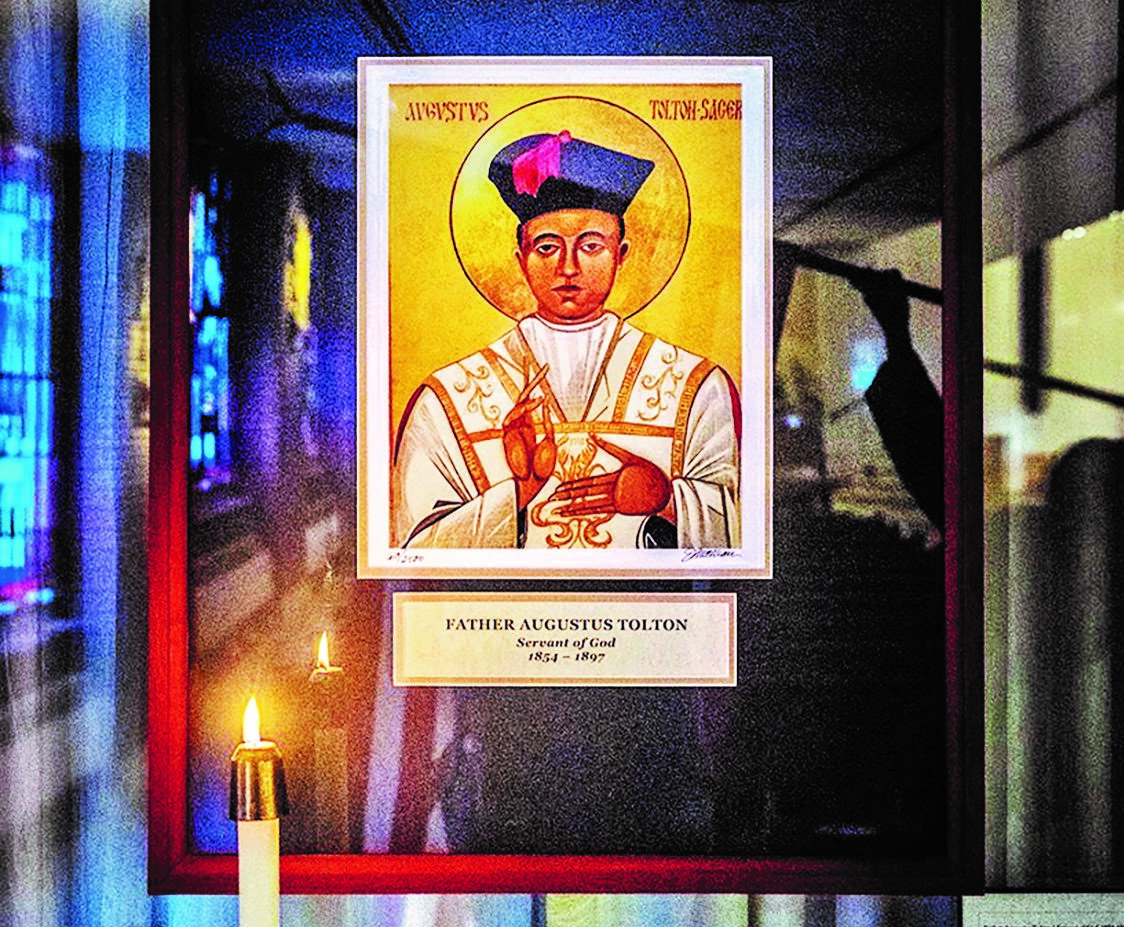Shrine at parish near St. Louis honors first Black priest in U.S.
Holy Name of Jesus Parish draws attention to social justice, servant of God’s 167th birthday
April 1 would be the 167th birthday of Father Augustus Tolton — and there are a few places in St. Louis where the 19th-century priest is remembered, including a new one just in time for his birthday.
Fr. Tolton, the first Black Catholic priest in the United States, lived a life of dedicated service and tireless ministry in addition to having endured great prejudice.
Because of his life of heroic faith, his cause for sainthood is now under way in Rome.
There’s a new shrine to him at Holy Name of Jesus Church in north St. Louis County focused on an icon depicting Fr. Tolton, whose title in the canonization process is Venerabale. It was set up earlier this year just in time for the celebration of his 167th birthday.
The shrine is in an area with other items calling attention to the parish’s efforts for social justice and peace.
Highlighted is the parish’s 2013 membership commitment in the North County Churches Uniting for Racial Justice and Harmony. Initially 114 parishioners committed themselves to the covenant displayed there.
Also displayed is a notice of the 2018 peace pole dedication representing the parish’s commitment to work and pray for world peace and social justice in our community.
In the parish bulletin, Father Michael Henning, pastor of Holy Name of Jesus Parish, wrote that Fr. Tolton’s “life and works are now being considered in support of his canonization. As an African American priest, he faced discrimination both within our Church and our society.”
Some of the other churches that commemorate Fr. Tolton include Blessed Teresa of Calcutta Church in Ferguson, which has a large portrait of him, and St. Alphonsus Liguori “Rock” Church in St. Louis, which has a statue of Fr. Tolton.
In 1887, Fr. Tolton met the Redemptorist community at St. Alphonsus Church and celebrated Mass for the School Sisters of Notre Dame in the convent chapel.
The St. Charles Lwanga Center has the icon framed on a table with prayer cards.
Fr. Tolton was born in 1854 in Brush Creek, near Monroe City, Missouri. It was part of what was then the Diocese of St. Louis, and is now in the Diocese of Jefferson City.
His parents were slaves who lived on adjoining farms owned by Catholic families.
Fr. Tolton was baptized Catholic at St. Peter Church in Brush Creek. His father joined the Union Army when the Civil War broke out. His mother took her three children across the Mississippi River to Quincy, Illinois, a free state where she was assisted by those sympathetic toward runaway slaves.
An Irish priest, Father Peter McGirr, recognized the talent of Augustus, who attended Mass when possible.
The priest invited him to attend the parish school taught by the School Sisters of Notre Dame. Franciscan and diocesan priests helped tutor him when he expressed an interest in the Priesthood. But no seminary or religious order in the country would accept a Black candidate at that time.
He was admitted in 1880 to the College of the Propagation of the Faith, a mission seminary in Rome, and was ordained there at the Basilica of St. John Lateran in 1886.
He became pastor of St. Joseph Parish in Quincy and later established St. Monica Church in Chicago.
Despite rampant racism and discrimination, he became one of the city’s most popular pastors, attracting members of both white and Black Catholic communities.
On July 9, 1897, he died of heatstroke on a Chicago street at the age of 43.
The icon at Holy Name of Jesus Church first hung in Christ Light of the Nations School. Holy Name of Jesus Parish is involved in several areas of justice and social concerns. It takes part in the Room at the Inn program, has a strong Society of St. Vincent de Paul conference, hosts a faith and justice group that includes parishioners from St. Philippine Duchesne Parish in Florissant, and more.
Mr. Kenny is a staff writer for the St. Louis Review, newspaper of the St. Louis archdiocese. This article from the April 1 print edition is republished here with permission.






